With the success that Omega Force, Tecmo Koei and Namco Bandai have enjoyed in translating the Gundam series to the Dynasty Warriors format (and to a lesser extent, Fist of the North Star), it's not much of a surprise that they would set their sights on another popular shonen anime/manga property. It's also not much of a surprise that it ended up as a downloadable-only title in North America, as One Piece never took much of a foothold. Thus, here it is, with nothing localized beyond the text and a slightly-below-retail price. Nevertheless, I'm glad we got it at all, especially since it provides a poignant look into the possible future of the series by introducing some promising and worrisome design decisions. To outline what these are, we'll have to first talk about what sets apart Pirate Warriors from the rest of the Warriors series.
The first thing anyone will notice about this game is that the presentation does its best to steal the show. Fans of the manga and anime will fall in love with the smoothly animated cel-shaded graphics, huge models and dozens of enemies who go flying (complete with sound effect cues in Japanese, manga-panel style) whenever big attacks are landed by the cast. Upbeat and energetic music blares as the Straw Hat Pirates navigate tricks and traps while fighting hordes of pirate mooks. As they work together, they banter with each other and their enemies in well-done Japanese voice acting, and the climaxes of several One Piece story arcs are on displayed in breathtaking cut scenes once players are done navigating the game's set pieces.
The next thing players will notice is the standard, yet novel, loadout of modes for a Warriors game. You've got your story mode, called the Main Log, where you play as Luffy and fight alongside different comrades through several significant One Piece story sagas. Then there's Another Log, called the Free or Musou mode in other games, where you can play as other characters in the more traditional "territory protection" scenarios you'd see from Warriors games. In a nice twist, Another Log also serves as bite-size story modes for the rest of the cast. This mode has co-op play, as does the included and similarly playing Online mode. Once the Main Log is beaten, Challenge mode opens up, though most people know it as a Horde mode. You play as any character and face endless waves of enemies, bosses included. Finally, the Gallery is your one-stop shop for all things One Piece as it pertains to this game.
Where the differences start to show, in both good and not-so-good ways, is in the meat of the gameplay. They all stem from a single fact: Since One Piece is a single series with a smaller character cast than a sprawling franchise like Gundam or a huge multiparty warfare soap opera like Romance of the Three Kingdoms, there are fewer characters in the spotlight. To compensate, Omega Force has given them much deeper move sets. Not only are there standard melee combos, but there are also extra techniques that, depending on the character, can do things like parry attacks, rain lightning from the sky, launch groups of enemies to set up for air combos, and a bunch of other things that aren't normally found in Warriors games. In addition, players can temporarily assume the role of teammates on the battlefield, for either assist attacks or rudimentary team combos. One Piece's cast is also far more agile than ancient Chinese/Japanese warriors and huge hulking robots, so you have some really fast, combo-laden action. These are excellent additions and make every character fun to explore, as they allow Warriors games to come closer to leaving the realm of the button-masher and becoming action brawlers with technique. Playing as the fleet-footed, high-kicking Sanji is one of the most satisfying experiences I've had in my time playing Warriors games, and I've been playing them for over a decade.
Adding to the depth are Coins, which are gained after every mission. These can be placed into various combinations to allow for extra stat upgrades and bonuses involving team arrangements. The final big change is that of the jump mechanic, which has been removed and replaced with a dodge that executes quickly and is immensely satisfying when navigating a crowd. Holding down the button also causes your character to break into a run for fast stage navigation. With all of these improvements, though, the camera is still as "special" as it is in every Warriors game to date. You've been warned, but at least there's a camera reset function if things get too hairy.
However, for all the good to be had, Pirate Warriors brings another new set of "features" in its main story mode, made mainly as concessions to people who may watch the anime but might not play too many action games. The stages are longer than I've seen from any game in the series, complete with multiple midstage save points. A huge reason for this is the pacing of the stages. While the standard "one against many" formula is alive and thriving in One Piece world, Omega Force has begun to experiment with a couple of things outside of its comfort zone, such as environment puzzles; rudimentary platforming; and puzzle platforming involving switches, elevators and time limits. This can often result in a bunch of running around trying to find progression areas, watching Luffy slingshot himself from obstacle to obstacle, and using timing to swing Luffy around by his stretchy-rubber arms from anything he can get his hands on. Eventually, the game combines these things, and it's a huge headache all around, bogging down things while you beg to get back to the real action.
If you like to just get in, beat a bunch of baddies to get your fix and get out, Main Log is going to be a slog, but it is still worth completing to unlock the Another Log and Challenge modes, which is where you'll find the real, action-packed fun mentioned earlier in this review. A couple of more obvious concessions take place in the form of Quick Time Events in the cut scenes. To the developer's credit, you're not penalized for missing them, and their motions and button prompts are contextual to the player's movement and actions, much like Capcom's Asura's Wrath. There are also tutorials all over the place, especially when you start playing for the first time.
The above means that, at least in the Main Log, instead of enjoying the thrill of beating up hordes of enemies using the various powers and fighting styles of these quirky pirates, you're more enjoying the atmosphere and presentation as the game either shows you a cut scene or asks you to time Luffy's rubber-powered flight. The puzzle and platforming parts don't hold up well to replays, either. The other modes, thankfully, fare much better. Hopefully, this doesn't become a staple of future Warriors games because for all the complaints of their so-called "repetitiveness," they're at least repetitive in a way that constantly engages the player. Take that away, and ... well, we already have Prince of Persia and Assassin's Creed for our tricky platforming needs. Such are the crossroads at which we currently stand, and it's my hope that Omega Force recognizes this.
If you're a One Piece fan or someone looking for something just a little different from your standard Dynasty Warriors title, One Piece: Pirate Warriors gets a heavy recommendation. Just keep in mind that "different" is the key word, for both better and worse. Your money buys a whole lot of content, so it won't be wasted. The Main Log, while mostly enjoyable, takes a bit of patience, but the other modes are worth the price of admission all by themselves.
Though, Omega Force, if I could make a suggestion? You've already made Dynasty Warriors Strikeforce. Twice. Go ahead and reskin that into a Dragon Ball Z Warriors, streamline the controls, and add local and online co-op. You'll make a mint.
Score: 8.0/10
More articles about One Piece: Pirate Warriors


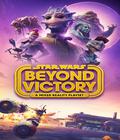
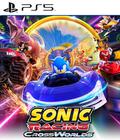
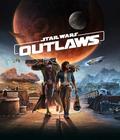
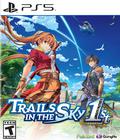
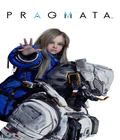
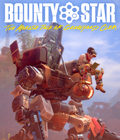
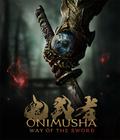


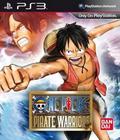 One Piece: Pirate Warriors brings together the popular manga franchise with nonstop action of the Dynasty Warriors franchise to create a One Piece perfect storm.
One Piece: Pirate Warriors brings together the popular manga franchise with nonstop action of the Dynasty Warriors franchise to create a One Piece perfect storm.








































